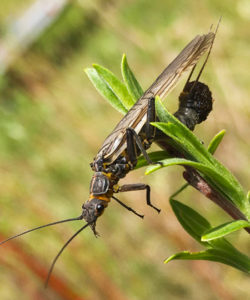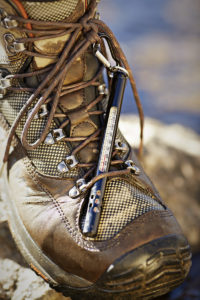The following content is part of our Fly of the Month Club. This article is written by Peter Stitcher from Ascent Fly Fishing.


The world of trout is ruled and regulated by cycles. Each Spring, the Rainbow and Cutthroat Trout spawn, followed by the Brown and Brook Trout in the Fall. The fish in the river migrate from deep pools to flooded river banks to fast flowing riffles and back again to account for the rise and fall of the rivers. Like taking a number at the DMV, each hatch waits its turn and will emerge from the water in a predictable progression at roughly the same times each year. Every so often though, the seasons spin outside of their norms, bringing unusually high winter snow packs, torrential spring rains, or in the case of this year for much of the Western US, historically low snow levels. While these low water years can open up some unique fishing opportunities, the angler needs to be mindful and adjust his/her fishing habits so as not to unintentionally kill fish in these extreme conditions.
Warm Water Kills Trout


Take an Afternoon Siesta
Plan on getting to the river early to fish the cool morning hours. After a long, cool night, river temperatures will typically drop 6 – 7°F allowing the angler to fish without exhausting and harming the trout. Get to the river at first light, fish for 6 or 7 hours, and when the water temperatures start creeping up on the danger zone (67°- 68°F), head home and take a siesta.
Skip the Photos
Even when fishing the cool morning hours, we will need to bring the fish quickly to hand, keep them wet, and skip the fish photo op. Each day as the water temps reach their lethal limits, trout spend a little more of their energy reserves, and the angler’s excessive need for Instagram and Facebook material could very likely cause the death of the fish. Please, keep the fish wet, hold its memory dear, skip the photos, and add a few inches to its length when telling your fish stories!
Embrace the Long Goodbye
It is going to take the trout longer to revive and swim away when being caught in the summer, so be patient. Keep the fish in the water while removing the hook and then hold it facing up into the current while it recovers its strength. Gently holding the fish by its tail, it will swim off into the current once it has fully revived. Giving the trout a little extra time in the summer will ensure that they are there to greet us and our flies the next time we visit the river!
For the future of the rivers and trout that we all love, please be sure to share these low water tips with your fishing buddies and join us next month for Part 2 of Low Water Trout Tips & Tactics as we break down the rigs and locations for the best low flow fishing.



